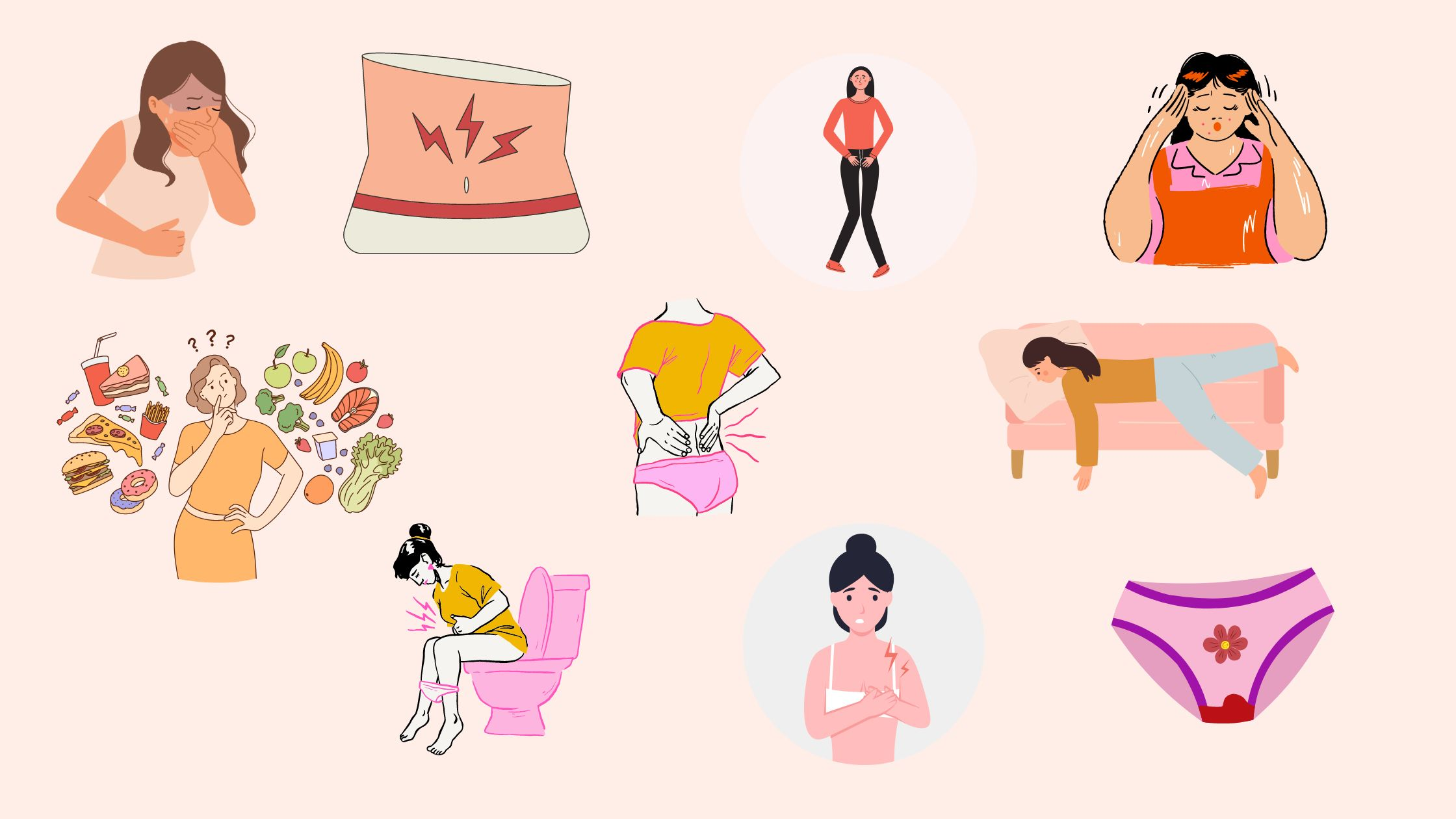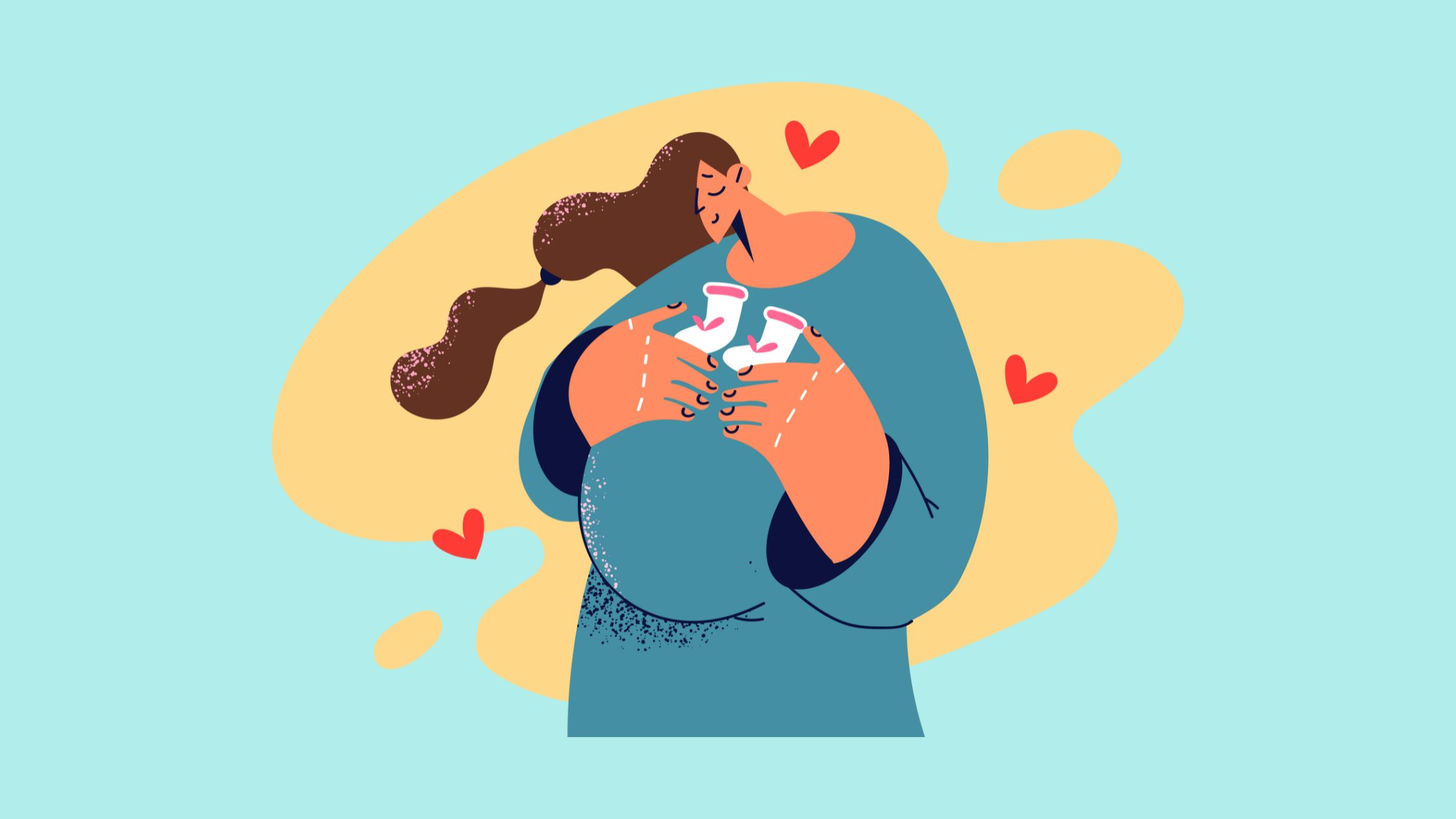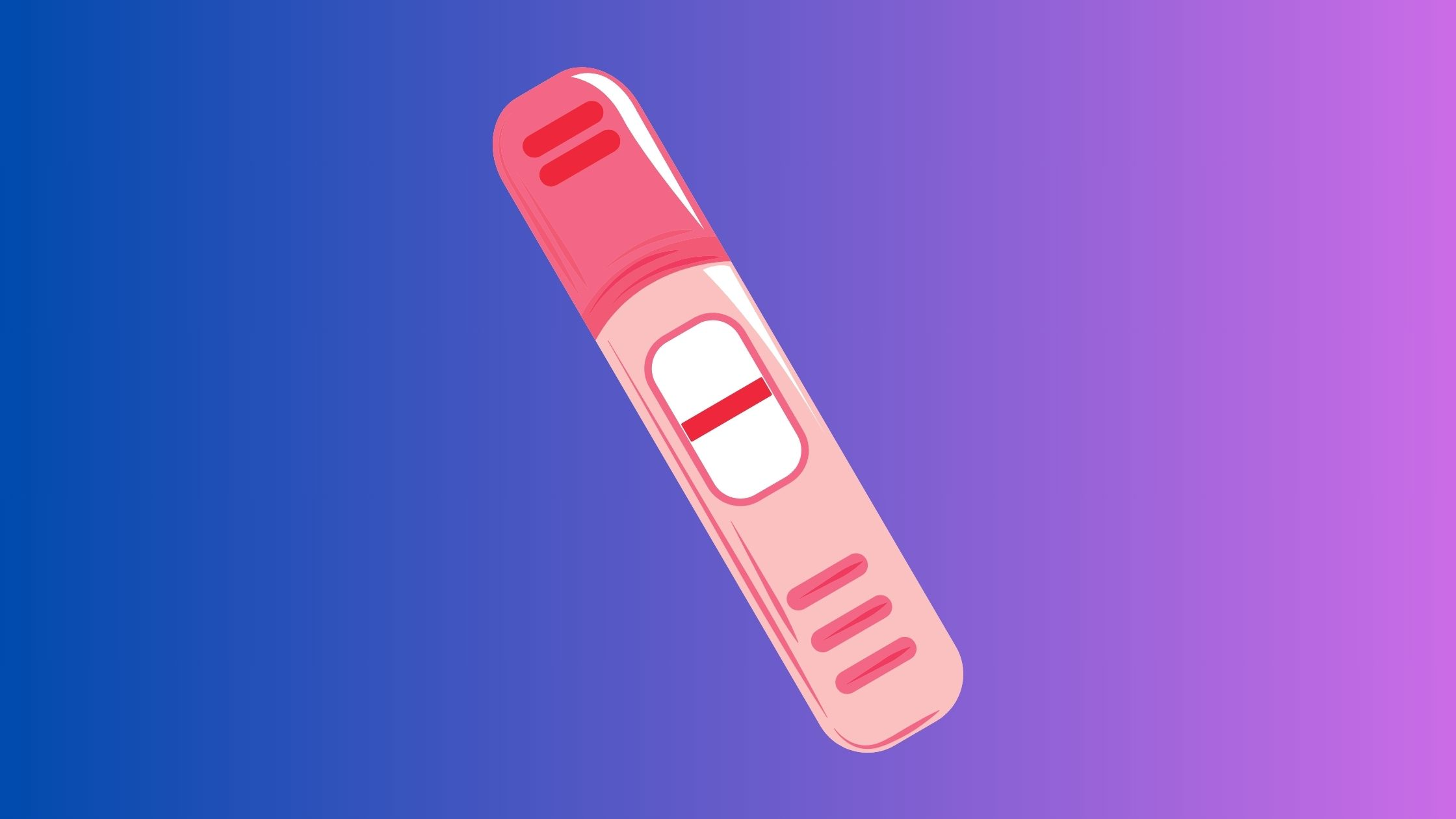The two-week wait between ovulation and the time you can take a pregnancy test can feel like the longest stretch ever. It’s a time filled with anticipation, and many women constantly search for early symptoms that might hint at a pregnancy. By the time you hit 12 DPO, the suspense is almost palpable. You’re on the home stretch, and there’s a good chance that home pregnancy tests might even show that much-awaited big fat positive (BFP).
It’s not just about the waiting; you’re probably hyper-aware of every little change in your body, wondering if it’s an early sign of pregnancy. The good news? By 12 DPO, you’re nearing the end of this nerve-wracking wait.
For those who’ve been trying for a while, any sign, even those that mirror period symptoms, can spark the urge to take a pregnancy test. While many women typically wait until they’ve missed their period to test, which is about 15 DPO, testing around 12 DPO can also give accurate results. This is because, by this time, there’s usually enough of the pregnancy hormone, human chorionic gonadotropin (HCG), to detect a pregnancy.
Here are the details on the process and timing of conception and implantation, the recommended time for your first pregnancy test, and the possible early signs you could experience before a missed period.
What is 12 DPO?
DPO stands for “days past ovulation.” This period is infamous among couples trying to conceive (TTC) because they must wait to find out if they’ve successfully become pregnant. The reason for this anticipation? Well, you’re most fertile about 5 to 6 days before and on the day of ovulation. So, couples aiming for a baby often time their intimate moments to align with this peak fertile window.
However, the catch is that even if everything lines up perfectly, you won’t know immediately if you’re pregnant. It takes a couple of weeks post-ovulation to get a reliable indication of pregnancy. That’s why there’s such a buzz around the two-week wait.
By reaching 14 DPO, you’re in a prime position to take a pregnancy test and get the most accurate results. But at 12 DPO, while you’re on the cusp of that 14-day mark, you’re not quite there. Still, if you did conceive, you might start noticing a few early pregnancy symptoms around this time.
What Is Happening in Your Body at 12 DPO?
Typically, ovulation happens about 14 days before your next period. The exact day varies based on your cycle length, but 12 DPO is usually close to your period date.
During ovulation, an egg is released from the ovary and moves into the fallopian tube. If sperm is present, the egg can be fertilized here, forming a zygote. This is possible if sperm is introduced up to five days before or 24 hours after ovulation.
The fertilized egg then travels to the uterus, growing and dividing. By the time it reaches the uterus, about five days later, it comprises hundreds of cells.
Meanwhile, the hormone progesterone is produced, preparing the uterus for the zygote to implant. Once the zygote implants in the uterus, you’re officially pregnant.
Early Pregnancy Symptoms at 12 DPO

At 12 DPO, you’re in the thick of the anticipation phase, eagerly waiting to see if you’re pregnant. Even though it’s a bit early for a pregnancy test, your body might give you subtle hints. The hCG levels start quite low but will consistently rise during the initial weeks of a healthy pregnancy. As the hormone levels rise, it triggers a series of changes in your body.
Now, here’s the thing: these symptoms can be a mixed bag. Some women might experience many signs, while others might not feel any different. And some of the pregnancy symptoms are so understated that they might fly under the radar, not even registering as related to pregnancy.
But if you’re keen-eyed, a few signs at 12 DPO could indicate you’re pregnant. However, a word of caution: these symptoms can be similar to the ones you get before your period. So it’s easy to get them mixed up.
Some of the early symptoms of pregnancy at 12 DPO include:
1. Cramping
When a fertilized egg reaches the uterus and starts settling into its lining, it can cause the uterus to stretch. This stretching can cause mild-to-moderate cramps. While these cramps might feel similar to the ones you get right before your menstrual cycle, they could be your body’s way of signaling that there’s a baby on board.
These cramps, often milder than period cramps, can come and go over several days. If you typically feel menstrual cramps a few days before your period and notice cramping much earlier in your cycle, it might hint that you’re pregnant.
However, while cramping can be a sign of pregnancy, it’s not exclusive to it. In some rare but serious cases, severe cramping and bloating early in pregnancy could indicate an ectopic pregnancy, where the fertilized egg grows outside the uterus. This condition is life-threatening, so if you experience intense symptoms, you must see a doctor immediately.
2. Spotting
While it’s easy to mistake light bleeding for the onset of a period, it’s often a sign of implantation. Implantation bleeding occurs when the fertilized egg burrows into the uterine lining, causing a bit of spotting that can vary in color from pink to red to even brownish-black. Unlike the usual menstrual flow, this spotting is typically lighter and lasts for a shorter duration, often no more than three days.
Implantation bleeding is a common early pregnancy sign, with about 15 to 25 percent of women experiencing it. The spotting can occur anywhere from 7 to 12 DPO, which might overlap with the expected dates of your next period.
3. Changes in Breasts
Breast changes are among the earliest and most common signs of pregnancy. Around 12 DPO, many women begin to notice symptoms like increased tenderness, sensitivity, or a feeling of heaviness in their breasts. This breast tenderness is often mistaken for PMS, as both conditions can cause breast pain and discomfort. However, there are some distinct differences.
The hormones, particularly progesterone, play a significant role in these changes. As progesterone levels rise, it prepares the body for pregnancy, increasing blood flow to the breasts and making them tender. This hormone also causes the uterine lining to grow and thicken, preparing it for a potential embryo. Additionally, rising progesterone levels are responsible for the darkening of the nipple and areola, a change rarely associated with PMS.
Another factor contributing to breast changes during early pregnancy is the increased production of the human chorionic gonadotropin hormone (hCG) after the fertilized egg implants. This hormone surge can make breasts even more sensitive. As pregnancy progresses, these symptoms typically ease, especially by the end of the first trimester.
4. Unusual Fatigue
Fatigue is a common symptom many pregnant women report as early as one week after conception. This overwhelming tiredness can be attributed to the surge in progesterone levels in the body. While fatigue is also a symptom of PMS, the exhaustion linked to early pregnancy tends to be more intense and can persist longer than typical PMS-related tiredness.
Apart from the rise in progesterone, changes in blood flow to the uterus and alterations in the circulatory system play a role. Additionally, the body’s increased demand for sugar and oxygen, coupled with potential drops in sugar levels, can contribute to the feeling of exhaustion.
But hang in there! While the fatigue can be pretty intense initially, many women find relief in the second trimester. In the meantime, consider boosting your energy by consuming foods rich in iron and protein, staying hydrated, and catching some extra Zzz whenever possible.
5. Frequent Urination
If you’re dashing to the bathroom more often around 12 DPO, it might not just be that extra cup of tea you had. Early pregnancy could be the culprit. With the onset of pregnancy, there’s an increase in the hormone hCG, which leads to more blood flow to the pelvic area, including the bladder. This surge in blood volume, coupled with additional body fluids, means your kidneys are working overtime. As they process these increased fluids, your bladder fills up quicker, making those bathroom trips more frequent.
But that’s not the only reason you might feel the urge to pee. As your uterus grows to accommodate the developing fetus, it can press against your bladder. Even if you’ve just been to the bathroom, this pressure can trick your brain into thinking it’s time to go again.
Additionally, the high progesterone levels during early pregnancy relax the ligaments supporting your bladder and urethra. This relaxation can further contribute to the sensation of needing to urinate more often.
6. Morning Sickness
Nausea, often referred to as “morning sickness,” is one of the early signs of pregnancy. But don’t be fooled by the name; this symptom can strike any time of the day or night. While most women start to experience this about a month into their pregnancy, some might feel it sooner, especially if they’re more sensitive to the hormonal shifts in their bodies. But if you’re one of the lucky ones who doesn’t feel a hint of nausea, don’t jump to conclusions. Every pregnancy is unique; some women sail through without feeling sick.
7. Bloating
Feeling bloated or dealing with heartburn and constipation? It might not just be something you ate. Elevated progesterone and estrogen levels during early pregnancy can slow digestion, leading to these uncomfortable symptoms.
8. Elevated Basal Body Temperature
For those who chart their cycles, it’s interesting to note that basal body temperature (BBT) tends to rise after ovulation, often by half to a full degree Fahrenheit. If you’re pregnant, this elevated BBT might stick around. But if not, expect it to drop back down right before your period, heralding the onset of a new menstrual cycle. It’s nature’s way of giving a subtle heads-up!
9. Changes in Cervical Mucus
You might spot changes in your vaginal discharge leading up to your expected period. There’s often an uptick in cervical mucus due to the early stages of pregnancy. This discharge might appear milky white and have a sticky consistency.
These changes stem from fluctuating hormone levels, increased blood flow to your vagina, and even alterations in your cervix. While this whitish discharge results from changes in the vaginal walls and thickening, it’s typically harmless and doesn’t require treatment. However, you should see a doctor for itching, burning, or an unusual odor. You’d want to ensure there’s no bacterial or yeast infection lurking.
Can You Take a Pregnancy Test at 12 DPO?
Yes, you can take a pregnancy test at 12 DPO, and there’s a chance it could show a positive result. However, it’s a bit early, and here’s why:
For you to be pregnant, a series of events must align. First, sperm must enter the uterus, journey up the fallopian tubes, and meet an egg released during ovulation. After being released, this egg is only up for fertilization for a 12 to 24-hour window. If the stars align and fertilization happens, the embryo then travels to the uterus, implanting itself in the lining. This implantation can occur as early as 5 days after fertilization or as late as 11 days or more. Once snugly implanted, the embryo’s surrounding cells start producing the hormone hCG, which is what pregnancy tests detect.
While you might be itching to see that BFP (Big Fat Positive), it’s essential to understand that you’re still a smidge away from missing your period at 12 DPO, especially for those with a regular 28-day cycle. The amount of hCG in your system might not be high enough for a test to detect, even if you’re pregnant. This means a negative test at this stage doesn’t necessarily dash your hopes for this cycle. On the other hand, you could experience a chemical pregnancy (an early miscarriage), which might lead to a false-positive test outcome.
Most experts recommend waiting until the day of your next expected period, or at least two weeks after ovulation, for the most accurate results. After all, the body needs its time to work its magic!
12 DPO and Positive Pregnancy Test (BFP)

If you’ve got a big fat positive pregnancy test (BFP) at 12 DPO, that’s exciting news! However, it’s essential to approach this with a pinch of caution. Testing at 12 DPO is still early, and there’s a slim chance that the result could be a false positive. This could be due to a chemical pregnancy, which accounts for a significant portion of all conceptions.
Premenstrual symptoms (PMS) often mimic early pregnancy signs, making it tricky to determine when to test. While hCG levels rise rapidly post-fertilization, it’s still possible to get faint positive lines on a test at 12 DPO.
For a more definitive answer, testing again at 14 DPO or on the day of your expected period is generally recommended. If patience isn’t your strong suit, consider seeing your OB/GYN. They can not only confirm the pregnancy but might also observe signs like a softened cervix or a clear or whitish vaginal discharge, indicating implantation and pregnancy.
12 DPO and Negative Pregnancy Test (BFN)

If you’ve taken a pregnancy test at 12 DPO and received a BFN, or “Big Fat Negative,” don’t be disheartened. Many at-home pregnancy tests might not be sensitive enough to detect lower hCG levels at 12 DPO.
Many of these tests are designed to provide the most accurate results when your period is due. So, if you’ve tested negative at 12 DPO, you could still get a positive result a few days later, as hCG levels typically double every 2-3 days.
What If You Don’t Have Pregnancy Symptoms at 12 DPO?
While some women might start feeling symptoms right after conception, others might not feel anything or only notice changes later.
If you’re at 12 DPO and haven’t noticed any symptoms, don’t fret. It might still be too early for any signs to manifest. While many women get a positive result on their pregnancy test at 12 DPO, a negative result doesn’t necessarily mean you’re not pregnant.
Remember, as menstrual cycles are unique to each individual, so are the timing and intensity of pregnancy symptoms. Factors like irregular menstrual cycles can also play a role, potentially delaying ovulation and any symptoms.
While it’s natural to be curious and eager, patience is key. Regardless of the result, consider following up with your healthcare provider for confirmation when you decide to take a pregnancy test. After all, every journey is unique, and it’s all about embracing the process and seeking support when needed.
Takeaway
- At 12 DPO, you’re in a prime window for early pregnancy symptoms and a potential positive result on a home pregnancy test.
- If your test comes back negative, don’t worry. Testing on or a few days after your missed period is more reliable.
- Healthcare professionals can offer a blood-draw pregnancy test to detect lower hCG levels, potentially confirming pregnancy sooner than a home test.
- 12 DPO marks 12 days post ovulation when pregnancy signs might start to show.
- If unsure about symptoms or the timing, consult your doctor for clarity on 12 DPO symptoms.
References
Cleveland Clinic. (n.d.). Implantation Bleeding: Causes, Symptoms & What To Expect. Retrieved from https://my.clevelandclinic.org/health/symptoms/24536-implantation-bleeding.
Health Line. 2 DPO: Testing, Early Symptoms, and More. Retrieved from https://www.healthline.com/health/fertility/12-dpo
Medical News Today. Early Pregnancy Symptoms by Days Past Ovulation (DPO). Retrieved from https://www.medicalnewstoday.com/articles/322723

